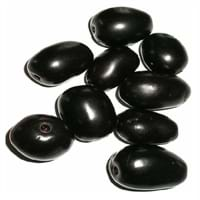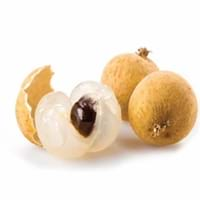Health Benefits
Cancer prevention, Heart care, Increase in haemoglobin, Regulates Blood Sugar, Ulcer prevention
Anti depressant, Anti-inflammatory properties, Healthy mucus membrane, prevents oral cavity cancer, Prevents anemia, Prevents cases of morning sickness, Prevents lung cancer, Skin rejuvenation, Treatment of colonic diseases
General Benefits
Boosts immune system, Digestive aid, Fights against infections, Strengthens bones
Anti oxidant properties, Anti-inflammatory properties, Digestive aid, Gives you energy, Suppresses Arthritis
Skin Benefits
Brightens and lightens complexion, Skin cleansing, Skin rejuvenation, Treatment of acne, Treatment of dark spots
Reduces wrinkles, Skin rejuvenation
Hair Benefits
Promotes longer and healthier hair, Protects hair
Not Available
Allergy Symptoms
Abdominal pains, NA
Itching, Swelling of mouth, tongue or lips, Tingling sensation in mouth
Side Effects
Decrease in blood sugar levels, Allergic reaction, Throat irritation, Throat swelling, Possibly unsafe during pregnancy
Mouth irritation, Weight gain
Best Time to Eat
As a snack in the late afternoon, Don't consume at night and before bed, Eat the fresh ones, avoid mixing with any other foods, don't eat after meal., Morning time (before lunch), Strictly avoid empty stomach
As a snack in the late afternoon
Vitamin B5 (Pantothenic Acid)
Not Available
Vitamin B9 (Folic acid)
Not Available
Vitamin C (Ascorbic Acid)
Phytosterol
Not Available
Calories in Fresh Fruit with Peel
Calories in Fresh Fruit without Peel
Not Available
Not Available
Calories in Frozen Form
Not Available
Not Available
Calories in Dried Form
Not Available
Not Available
Calories in Canned Form
Not Available
Not Available
Calories in Jam
Not Available
Type
Tree fruit, Tropical
Tree fruit, Tropical
Season
Monsoon, Summer
Mid to late summer
Varieties
Ram Jarnun and Paras
Chompoo Longan, Kohala Seedling, Haew, Edau and Biew Kiew
Seedless Variety
No
Not Available
Color
Black, Magenta, Purple
Rusty brown
Inside Color
Purple
Yellowish brown
Taste
Astringent, Sweet
Sweetish
Origin
Bangladesh, India, Indonesia, Malaysia, Nepal, Pakistan, Philippines, Sri Lanka
Mexico
Soil Type
Loam, Sandy loam, Well-drained
Well-drained
Climatic Conditions
Humid, Rainfall
Sunny, Warm, Without frosts
Facts about
- Wood of jambul tree is water-resistant wood & is used in railroads and to implement engines in the well.
- In Indian mythology, it is said that Jambul fruit was revered by Buddha.
- Jambul has a huge importance in Ayurveda.
- Longan is also called as "Dragon's eye" in China as it gives an impression of an eyeball.
- Longan seeds can be used to absorb the venom after the snake bite and they also help to stop bleeding.
Top Producer
India
Thailand
Other Countries
Bangladesh, Indonesia, Malaysia, Nepal, Pakistan, Philippines, Sri Lanka
Australia, Combodia, Taiwan, United States of America, Vietnam
Top Importer
Not Available
China
Top Exporter
India
Thailand
Botanical Name
Syzygium cumini
Dimocarpus longan
Synonym
Eugenia cumini
Dragon eye
Subkingdom
Tracheobionta
Viridiplantae
Division
Magnoliophyta
Tracheophyta
Class
Magnoliopsida
Magnoliopsida
Order
Myrtales
Sapindales
Family
Myrtaceae
Sapindaceae
Genus
Syzygium
Dimocarpus
Species
S. cumini
D. longan
Generic Group
Not Available
Not Available
Difference Between Jambul and Longan
We might think that Jambul and Longan are similar with respect to nutritional value and health benefits. But the nutrient content of both fruits is different. Jambul and Longan Facts such as their taste, shape, color, and size are also distinct. The difference between Jambul and Longan is explained here.
The amount of calories in 100 gm of fresh Jambul and Longan with peel is 60.00 kcal and 83.00 kcal and the amount of calories without peel is Not Available and Not Available respectively. Thus, Jambul and Longan belong to and category.These fruits might or might not differ with respect to their scientific classification. The order of Jambul and Longan is Myrtales and Sapindales respectively. Jambul belongs to Myrtaceae family and Longan belongs to Sapindaceae family. Jambul belongs to Syzygium genus of S. cumini species and Longan belongs to Dimocarpus genus of D. longan species. Beings plants, both fruits belong to Plantae Kingdom.









